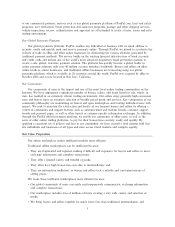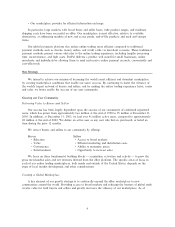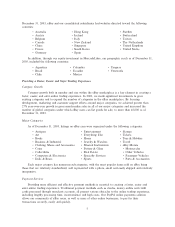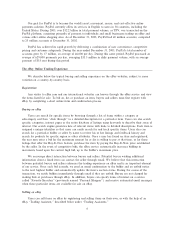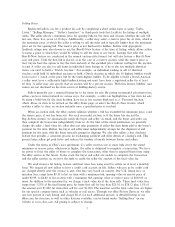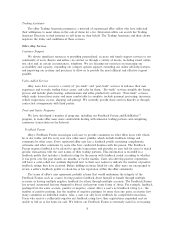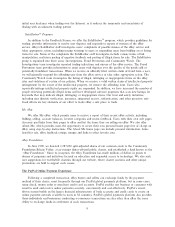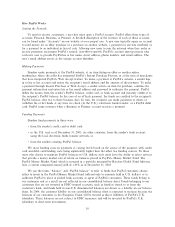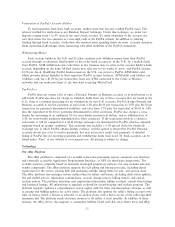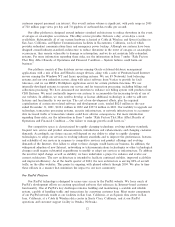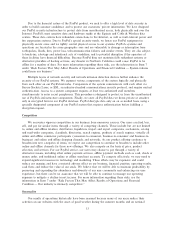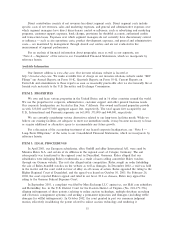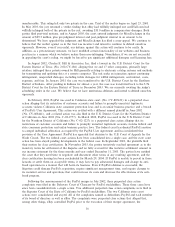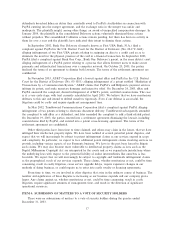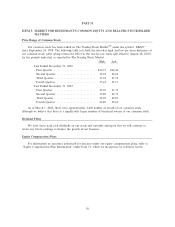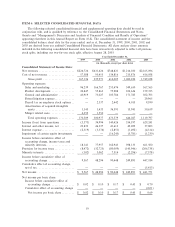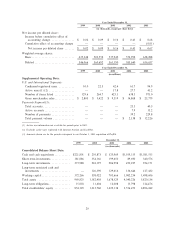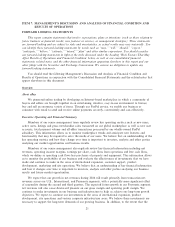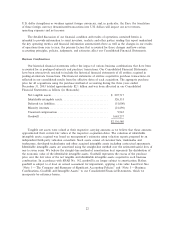eBay 2003 Annual Report Download - page 15
Download and view the complete annual report
Please find page 15 of the 2003 eBay annual report below. You can navigate through the pages in the report by either clicking on the pages listed below, or by using the keyword search tool below to find specific information within the annual report.
Due to the Ñnancial nature of the PayPal product, we seek to oÅer a high level of data security in
order to build customer conÑdence and to protect our customers' private information. We have designed
our PayPal security infrastructure to protect data from unauthorized access, both physically and over the
Internet. PayPal's most sensitive data and hardware reside at the Equinix and Cable & Wireless data
centers. These data centers have redundant connections to the Internet, as well as fault-tolerant power and
Ñre suppression systems. Due to PayPal's special security needs, we house our PayPal equipment in
physically secure areas and we tightly control physical access to our systems. PayPal's systems and
operations are located in the same geographic area and are vulnerable to damage or interruption from
earthquakes, Öoods, Ñres, power loss, telecommunication failures and similar events. They are also subject
to break-ins, sabotage and intentional acts of vandalism, and to potential disruption if the operators of
these facilities have Ñnancial diÇculties. Because PayPal does not maintain fully redundant systems or
alternative providers of hosting services, any disaster in Northern California could cause PayPal to be
oÉine for a number of days. For more information regarding these risks, see the information in Item 7
under ""Risk Factors That May AÅect Results of Operations and Financial Condition Ì System failures
could harm our business.''
Multiple layers of network security and network intrusion detection devices further enhance the
security of our PayPal systems. We segment various components of the system logically and physically
from each other on our PayPal networks. Components of the system communicate with each other via
Secure Sockets Layer, or SSL, an industry-standard communications security protocol, and require mutual
authentication. Access to a system component requires at least two authorized staÅ members
simultaneously to enter secret passphrases. This procedure is designed to protect us from the unauthorized
use of PayPal's infrastructure components. Finally, we store all PayPal data we deem private or sensitive
only in encrypted form in our PayPal database. PayPal decrypts data only on an as-needed basis, using a
specially designated component of our PayPal system that requires authentication before fulÑlling a
decryption request.
Competition
We encounter vigorous competition in our business from numerous sources. Our users can Ñnd, buy,
sell, and pay for similar items through a variety of competing channels. These include but are not limited
to, online and oÉine retailers, distributors, liquidators, import and export companies, auctioneers, catalog
and mail-order companies, classiÑeds, directories, search engines, products of search engines, virtually all
online and oÉine commerce participants (consumer-to-consumer, business-to-consumer and business-to-
business) and online and oÉine shopping channels and networks. As our product oÅering continues to
broaden into new categories of items, we expect our competition to continue to broaden to include other
online and oÉine channels for those new oÅerings. We also compete on the basis of price, product
selection, and services. For our PayPal service, our users may choose to pay through a variety of
alternative means, including other online payment services, oÉine payment methods such as cash, check or
money order, and traditional online or oÉine merchant accounts. To compete eÅectively, we may need to
expend signiÑcant resources in technology and marketing. These eÅorts may be expensive and could
reduce our margins and have a material adverse eÅect on our business, Ñnancial position, operating results,
cash Öows and reduce the value of our stock. We believe that we will be able to maintain proÑtability by
preserving and expanding the abundance and diversity of our user community and enhancing our user
experience, but there can be no assurance that we will be able to continue to manage our operating
expenses to mitigate a decline in net income. For more information regarding these risks, see the
information in Item 7 under ""Risk Factors That May AÅect Results of Operations and Financial
Condition Ì Our industry is intensely competitive.''
Seasonality
Our results of operations historically have been seasonal because many of our users reduce their
activities on our websites with the onset of good weather during the summer months and on national
13


